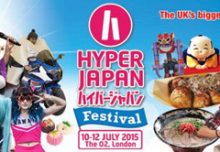
Night Ferries in Japan
Night ferries are a relaxing way to travel long distance in Japan. Now I’m a big fan of Japanese trains and the shinkansen, but taking the ferry for one leg of the journey was a fun and different way to travel. It felt like a mini cruise! It was also very relaxing – you often end up walking thousands of steps per day in Japan, and spending the evening on the ferry made us slow down and rest our feet for the night.
For the two of us, the cost of the ferry was less than the cost of the shinkansen plus a hotel for the night, and saved time by travelling overnight while we slept.
How to Find Ferry Routes
There are lots of ferries all around Japan. There’s an excellent list on Japan-Guide.com, with a map of the ferry routes and links to their operators. Bear in mind that ships are quite slow, so the longer routes do take some time!

Hankyu Ferry
We took the Hankyu Ferry , which has two routes (running both ways):
- Shinmoji (Kitakyushu, Kyushu) to Kobe.
- Shinmoji (Kitakyushu, Kyushu) to Izumiotsu (just south of Osaka).
There’s also the Sunflower Ferry, which is more well-known and very similar, which goes from Beppu to Oita or Oita to Kobe (as well as several other routes).
Kitakyushu is a very short shinkansen ride from Fukuoka, so for us, the Hankyu Ferry was the most convenient.
The ferry terminal at Shinmoji port looks very fancy, in the style of a Japanese shrine:

What it’s Like
It felt like taking a mini cruise! You’re free to wander around the ship, which has a range of facilities:
- Restaurant
- Vending machines with drinks (alcoholic and soft drink) and ice cream
- Shop selling souvenirs, snacks and essentials
- Onsen-style bath – a communal bath, more like a sento as it’s not hot spring water. There are separate baths for men and women.
- Karaoke rooms
- Outdoor deck
- Lots of communal areas to relax

Rooms
We stayed in a suite, which is the second best tier of room on the ship. I was tempted by the Royal suite, which has its own balcony, but decided to go for the regular suite in the end. The main reason I chose this room is because it has a full bathroom in the room. The other room types have only a sink and toilet, or a completely shared bathroom.
The room was just like a hotel room – in fact a large hotel room compared to many rooms in Japan. There’s a small sofa where we relaxed and watched a film, a dressing table and a full bathroom. It was comfortable and I have no complaints about the accommodation!
There are also hostel-style bunk beds and shared rooms that cost less, although in my opinion the suite wasn’t expensive, and in fact cost less than many hotels in Japan.

Funeko – The Ship’s Mascot
I became obsessed with Funeko, the mascot of the Hankyu Ferry! I love their expression, and the way they’ve just added legs, tail and a head to the ferry to turn it into a character. They look just like a taco cat!
The good news is that Funeko is everywhere, from the moment you get to the port. There’s also an impressive range of Funeko merchandise in the souvenir shop on board.

See what it’s Like in my Video
Take a tour of the ferry in my video, including our room, and see what it’s like spending the night on the Hankyu Ferry:
Schedule
- 18:40: Take the connecting bus from Kokura Station (the shinkansen station in Kitakyushu) to the ferry port in Shinmoji.
- 20:00 Set sail from Shinoji.
- 8:30am: Arrive in Kobe port (Rokko Island).
Note that the times vary slightly depending which day of the week you’re travelling, and the times are slightly different for the route going to Osaka.
The ferry sails between Honshu and Shikokou, under the famous bridges of the Seto Inland Sea. Before going to sleep, I was excited to see Matsuyama from the sea – one day I’d love to visit Shikoku!

How Much it Cost
For two people the fare was 32,480 yen, staying in a suite. This includes a 20% discount for booking online in advance.
The fares vary depending on the time of year. You can view the fare calendar for the next 4 months here on the official website.
How to Book
You can book the ferry online on the official Hankyu Ferry website. Reservations can be made 2 months, 7 days in advance.
When you book, you have to state whether you want to take the connecting bus, and where you want to take it from/to (details below).
Once you’ve submitted the online form, it’s approved manually, so you’ll probably get confirmation a day afterwards.
While the booking process is online, you pay at the ferry port just before boarding. Thankfully, they accept credit/debit cards as well as cash. As always, just make sure your card doesn’t charge fees for foreign currency transactions, as it’ll be in Japanese Yen.

Connecting Bus
There’s an optional connecting bus to get to and from the ferry port, both on departure and arrival. When you book, you need to specify whether you want to take the bus, and where you want to take it from/to.
On departure from Shinmoji (both options are included with your ticket). The port isn’t near a train station, so I’d recommend taking the connecting bus:
- From Kokura Station – The shinkansen station in Kitakyushu, which is a very short bullet train ride from Fukuoka.
- From Shinmoji Station – More convenient if you’ve spent the day sightseeing in Mojiko or Shimonoseki.
On arrival in Kobe there’s a choice of 4 stations:
- Rokko Liner: Island Kitaguchi Station (free)
- Hanshin Dentetsu Mikage Station (paid)
- JR Sumiyoshi Station (paid)
- Hankyu Dentetsu Mikage Station (paid)
Details of where to catch the connecting bus are on the official website. Their information on how to find the bus stop is very helpful, with a map and photo directions. There was already a queue of people there when I got to the bus stop, which is also shown in my video.
Luggage
You carry any luggage with you. Note that if you’re taking the connecting bus, the bus on the way there is like a small coach, with storage under the bus. However, the bus when you arrive is a regular city bus. It was very crowded so it’d be difficult with large suitcases.
We sent our luggage using Takkyubin, a luggage forwarding service. You can arrange this at the front desk of most hotels, and they’ll help you fill in the forms. This worked out really well, and was a better option than carrying suitcases with us. There’ll be a video coming up on my YouTube channel all about Takkyubin and how to use it.
Things to do near Shinmoji
Before you take the ferry, why not spend some the day in Kitakyushu and the surrounding area? Here are some ideas for what to do:
- Mojiko Retro – An area around Mojiko Station with historic, western style brick buildings.
- Aru Aru City – A shopping mall right next to Kitakyushu Station, that’s like Akihabara in a mall. Every store is anime merchandise or a games arcade.
- Railway museum – There’s a small train museum in Mojiko.
- Take the ferry to Shimonoseki – It’s a very short ferry ride across to Honshu, the main island, where there’s a fish market and aquarium by the sea. Shimonoseki’s known for fugu (pufferfish); you can see them at the aquarium and try fugu sashimi at the fish market.

Get my Japan Guide Book
My 300 page Japan guide book has lots more ideas for things to, and help with planning your trip. It’s available right here in the online shop (worldwide shipping):







